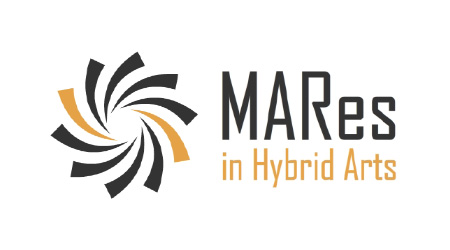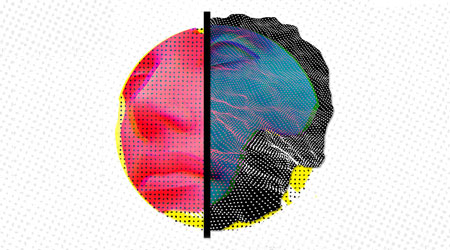Interactive Multimedia
Teaching Staff: Komianos Vassilis, Rovithis Emmanouel, Garneli Varvara
Course Code: AVA544
Course Category: Specific Background
Course Type: Elective
Course Level: Undergraduate
Course Language: Greek
Delivery method: Lectures
Semester: 5th΄
ECTS: 5
Teaching Units: 3
Teaching Hours: 3
E Class Page: https://opencourses.ionio.gr/courses/DAVA115/
Teaching Structure:
| Activity | Semester Workload |
|---|---|
| Lectures | 26 |
| Lab Lectures | 13 |
| Literature Study and Analysis | 56 |
| Practice and Preparation | 30 |
| Course Total (ECTS: 5) | 125 |
Prerequisite to / Recommended to: (AVA942)
This course introduces state-of-the-art interaction-theories, design methodologies and implementation technologies for the design and development of interactive multimedia systems, commonly used in autonomous modes, handheld devices and networks. Presentation of techniques and standards for the collection, encoding, representation and interaction techniques used for each data-type (sound, image, animation, video) are presented, including specific storage requirements. Moreover, wired and wireless networked interactive multimedia technologies, advanced compression and distribution techniques and protocols, as well as Quality of Service constraints for limited bandwidth networks are analysed. Finally, practical experience is gained in student projects developing networked multimedia systems and standards for interactive networked television and interactive arts. Students have to timely submit a number of compulsory assignments.
The main aims of the course is to presentat the theoretical background of multimedia in order for students to acquire practical knowledge and be able to identify characteristics of multimedia, its workflow, understand its complexity during transmission, processing and finally to be able to develop innovative interactive applications using modern techniques and methods. Specifically, students who complete the course successfully should be able to understand the: definitions of multimedia, interaction, feedback, history of multimedia, the application of multimedia today, features and coding of audio, image, video, interaction, modeling, design of modern multimedia systems, interaction complexity, coding of color, text and quality of representation, the online digital information transmission, multicast-unicast networks and their characteristics.
Week 1 - Introduction - Examples
Week 2 - Definitions - Concepts - History and Development of Multimedia
Week 3 - Digital Representation of Information
Week 4 - Text
Week 5 - Color, Images and Graphics
Week 6 - Audio
Week 7 - Video
Week 8 - Computer Multimedia Systems
Week 9 - Developing Multimedia Applications
Week 10 - Networked Multimedia Univast
Week 11 - Networked Multimedia Multicast
Week 12 - Design and development of educational multimedia systems (edutainment)
Week 13 - Project Presentation
In order to complete the course,students are expected to participate in laboratories realizing a total of 4-5 compulsory assignments.
The books listed are distributed in Greek language. Please contact the professor of the course should you require particular references in your language for easier reading.
Δεληγιάννης Ιωάννης (2010). Διαδραστικά Πολυμέσα και Ψηφιακή Τεχνολογία στις Τέχνες, Fagotto Books, ISBN 978-960-6685-06-4 Εύδοξος: 59359104
Δεληγιάννης Ιωάννης (2010). Η Κοινωνία της Πληροφορίας και ο ρόλος των Διαδραστικών Πολυμέσων (2nd Edition), Fagotto Books.ISBN 960-7075-99-4.
Δημητριάδης Σταύρος Ν.,Πομπόρτσης Ανδρέας Σ.,Τριανταφύλλου Ευάγγελος Γ. Τεχνολογία πολυμέσων Εύδοξος: 18549030
Κωνσταντίνος Χωριανόπουλος, Ο Προγραμματισμός της Διάδρασης Εύδοξος: 59362198
Lectures are presented using slides that are available through the e-class system and which incorporate multimedia interactive content to enhance the learning process while acting as examples for designing systems-applications-interactive multimedia content. The presentation of theoretical issues is accompanied by live experiments in which participants act first as subjects and then as researchers studying their results.
Assignments are given, the results of which are presented in the room or used as a basis for other, more complex assignments. Tasks can also be created using interactive collaborative tools.
Students who wish to see examples of multimedia systems are invited to explore the links section of the course.
The individual exercises given to the students aim to activate personal areas of interest.
Indicative categories of applications for the tasks are the following:
Interactive Ads
Multimedia Websites
Interactive Multimedia Art
Educational applications
Mini games
Enhanced by multimedia content.
The learning process is supported by the asyncrhonous e-learning platform e-class.
The exercises can be completed in English.
Progress in this course is assessed during the semester by quality implementation and timely submission of the required work and participation in the course activities (presentations, visits, projects, experiments). Submitted work is rated for the quality and scope of the implementation, proper formatting and completeness of the presentation that is often required to be implemented by the students to present the results of their research as part of the lecture. Work sent via other communication channels such as e-mail, social media will not be considered. Students are responsible to seek clarification if they do not understand the assignment and solve their queries during the course laboratory. In order for students to receive their final grade, they must submit a signed statement stating that their work does not contain plagiarism and it was solely created for this particular course. They must also sign the marking form provided by the lecturer during the exam period.
Students who do not complete the course and fail for a specific term, can complete and submit the work requested during the most recent semester. As the course progresses from year to year, they should always enquire about the latest exercises which should be present within the e-class system. Those exercises are submitted during the examination date as it is programmed centrally by the department and the students should also sign the form provided during the examination in order for their work to be evaluated and receive the final mark.
Back
| << | < | January 2026 |
> | >> | ||
| Mo | Tu | We | Th | Fr | Sa | Su |
1 |
2 |
3 |
4 |
|||
5 |
6 |
7 |
8 |
9 |
10 |
11 |
12 |
13 |
14 |
15 |
16 |
17 |
18 |
19 |
20 |
21 |
22 |
23 |
24 |
25 |
26 |
27 |
28 |
29 |
30 |
31 |
|
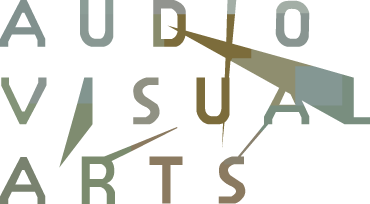


 Interactive Multimedia
Interactive Multimedia